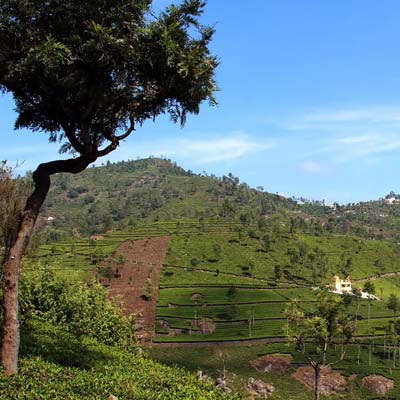Developed by: USDA Forest Service
Launched in 2006; Updated in 2019.
Why Use the Tool
i-Tree Eco Version 6—part of the i-Tree Suite—is a flexible software application designed to use data collected in the field from single trees, complete inventories, or randomly located plots throughout a study area along with local hourly air pollution and meteorological data to quantify forest structure, environmental effects, and value to communities. i-Tree Eco analyzes a variety of forest benefits and disbenefits, including wildlife habitat suitability, carbon sequestration, and impact on hydrology. It can assess forest structure, including composition and species diversity. It can even forecast future benefits while accounting for planting efforts, extreme weather, and annual mortality rates.
Recommended Tool
Dave Nowak, USDA Forest Service Senior Research Scientist: dnowak@fs.fed.us
Scott Maco, Director of Research and Development, Davey Expert Tree Co. : scott.maco@davey.com
General: info@itreetools.org
Input Data Required
Requires tree inventory (plot-based or individual trees)
Outputs
Report with estimation of urban forest structure, potential pest impacts, monetary values of trees, ecosystem services and benefits; forecasting of forest structure and benefits
Past Use Cases
Used globally, including in Barcelona, Spain, Providence, RI and Milwaukee, WI. See reports here
Case Study
Value of Trees to Air Purification in Barcelona
Barcelona, Spain, is one of Europe’s most densely-populated cities. Like many other European cities, Barcelona struggles with air quality problems and is seeking ways to meaningfully improve air quality and regulate climate in the city.
To quantify the benefits and costs related to air quality and climate regulation that urban trees bring to Barcelona, researchers applied the i-Tree Eco tool. In May and June of 2009, researchers collected field data from 579 randomly selected plots within the city, recording land use, tree cover, and—when applicable—species and size data. They also relied on pollution data from the Public Health Agency of Barcelona (ASPB) and the US National Climatic Data Centre, as inputs to i-Tree Eco.
The total value of the air purification provided by Barcelona’s trees was estimated at about $2.38 million USD/year (305.6 tons/year), with PM10 being one of the major pollutants removed. The value of the urban forest’s carbon sequestration was estimated at $407,000 USD/year (net 5187 tons carbon/year sequestered). The researchers also estimated the value of air pollution by urban trees (from emissions of organic compounds) at 183.98 tons/year.
Although these numbers represent relatively modest pollution removal (about 0.5-3% of total pollutants), i-Tree can also be used to calculate the other co-benefits provided by urban trees. In general, the ability to quantify both costs and benefits is invaluable when communicating with policy-makers and stakeholders.

Source: Baró, F., Chaparro, L., Gómez-Baggethun, E., Langemeyer, J., Nowak, D. J., & Terradas, J. (2014). Contribution of ecosystem services to air quality and climate change mitigation policies: the case of urban forests in Barcelona, Spain. Ambio, 43(4), 466–479.
Supporting Partners: Davey Tree Expert Company, Arbor Day Foundation, Society of Municipal Arborists, International Society of Arboriculture, Casey Trees, and SUNY College of Environmental Science and Forestry
Additional Guidance:











